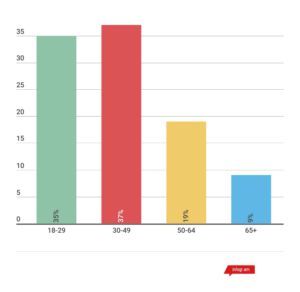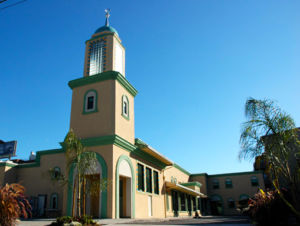When asked what religion I identify as, all I can do is shrug and say that I don’t know. Growing up I attended Sunday School sporadically until I stopped completely around third grade. My parents didn’t take us to church, and religion has never been part of our family dynamic. Although sometimes I wish I believed in that “something more,” it is a fleeting thought without an effect on my daily life. And it isn’t just me. One quarter of Americans are religiously unaffiliated, according to the Pew Research Center.
Although many differences distinguish millennials from older age groups, religion is a commonly overlooked yet defining characteristic of younger generations. When asked about religious identity, an increasing amount of Americans are choosing the answers none, agnostic and atheist.

In 2016, the largest religious group in the U.S was made of atheists, agnostics and nonbelievers, according to the Pew Research Center’s Religious Landscape Survey. The survey also revealed that the percentage of Americans who don’t identify with a religion grew from 16.1 percent in 2007 to 22.8 percent in 2014.
This nationwide trend also appears to hold true at Redwood. According to a 2014 Bark survey, 42 percent of Redwood students self-reported they did not identify with a specific religion. Why are younger generations, in particular high school students, becoming less religious?
“In high school people don’t really see [religion] as an important thing, because they have other things to worry about,” said junior Nura Laqta, a practicing Muslim. After all, teenagers have jam-packed schedules including homework, extracurricular activities, college applications and social activities.

A second contributing factor to religious decline is the way that younger generations were raised. The “Baby Boomer” generation, born 1946- 1964, raised their children in a more laissez-faire way, giving them the freedom to discover what they believed in instead of raising them with a religion from a young age, according to the Trust magazine, a branch of the Pew Research Center.
Seth Allingham, a pastor at North Bay Calvary in Mill Valley, has seen the same trend in our community as well as nationwide.
“The parents of the younger generations, for whatever reasons of their own, have chosen not to teach or expose their kids to religion in religion. It’s a religious vacuum,” Allingham said in a phone interview.
Laqta’s experience with religion says otherwise. She regularly visits family in majority Muslim countries where she celebrates religious holidays and attends the local mosques.
“Ever since I was little, we’ve gone to the Middle East or Africa, so I’ve always been exposed to [our religion],” Laqta said.
This early exposure and strong familial ties have strengthened Laqta’s faith and inspired her curiosity about Islam. However, she does not see the same level of devotion among her peers, who she says are much less religious. Laqta says she has only discussed religion with one friend, junior Victoria Wiggins.
Wiggins identifies as nonreligious or atheist, and was raised with the freedom to discover what she believed in.
Her mom is also an atheist, despite having family members that strongly identify with a religion.
“We just don’t think there’s a certain type of god or certain type of person that just does things for you,” said Wiggins of her and her mother.
One factor that contributed to Wiggins’ decision to be nonreligious was the behavior she observed in people of other religions.
“[They were] believing in it on Sundays, and throughout the week just not following their religion,” Wiggins said.
Wiggins saw this behavior as hypocritical. Her attitude towards organized religious institutions is similar to the younger generations’ as well.
The decline of religion in more recent generations can also be attributed to their shifting attitudes towards large institutions, both religious and nonreligious. In the Trust Magazine, Michael Hout, a professor of sociology at New York University, said that “younger people particularly are not as confident as older adults when it comes to institutions like the press, government and churches.”
A contributing factor to this decrease in trust are the scandals that have recently been associated with organized religions, most notably sexual abuse, according to Allingham.

The National Catholic Reporter identified 10,667 complaints of sexual abuse brought against church officials between 1950 and 2002. Movies such as Academy-Award winning Spotlight (2015) brought international attention to the issue, focusing on the topic of sexual abuse by Roman Catholic priests.
Publicized scandals that associated churches and religion in general with sexual abuse led to a sharp decline of confidence in religion, most notably between 200 and 2002, according to a Gallup poll.
Experts have predicted that future generations will be increasingly atheist and agnostic due to their millennial parents raising them without religious influences. Religious institutions have already seen decreased attendance from younger generations, and this trend will likely continue, leaving it up to them to institute measures to try and reverse it.
“There are some churches that will go as far as to change some of their core tenets of faith, and I think that’s counter productive,” Allingham said, adding that he is working to establish connections with recent generations by retelling stories in a more relevant way.
It is clear that the lack of faith in organized religious institutions among younger generations will have long-lasting repercussions, most notably in the way that future generations are raised.







